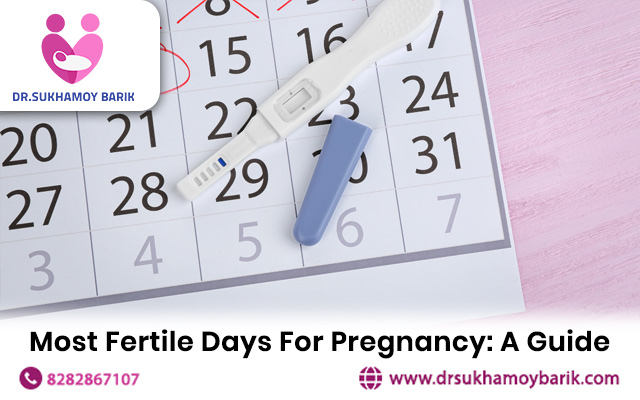Understanding your most fertile days is crucial for couples trying to conceive. Identifying these days can significantly increase your chances of getting pregnant. Here’s a comprehensive guide by a gynecologist specializing in the treatment of high risk pregnancy causes.
Understanding the Menstrual Cycle
A usual menstrual cycle lasts about 28 days, but it may range from 21 to 35 days. The cycle starts on the first day of menstruation and ends the day before the next period starts. Key phases of the cycle include:
- Menstrual Phase: The shedding of the uterine lining, lasting 3-7 days.
- Follicular Phase: Starting from menstruation and ending at ovulation, this phase involves the maturation of eggs in the ovaries.
- Ovulation: The release of the mature egg from the ovary, usually around the midpoint of the cycle.
- Luteal Phase: Following ovulation, this phase involves the thickening of the uterus lining to prepare for a pregnancy.
Identifying Ovulation
Ovulation mainly occurs around the middle of the menstrual cycle. For a 28-day cycle, ovulation usually happens around day 14. However, the exact timing might vary based on cycle length and individual differences.
Methods to Identify Ovulation
- Calendar Method: Track your cycle for a few months to estimate when ovulation occurs. Subtract 14 days from the end of your cycle to predict ovulation day.
- Basal Body Temperature (BBT) Charting: Your BBT slightly increases after ovulation due to progesterone. Track your temperature daily before getting out of bed to detect this shift.
- Cervical Mucus Monitoring: Cervical mucus changes throughout the cycle. Around ovulation, mucus becomes clear, stretchy and resembles egg whites. This is ideal for sperm to travel through, as per a gynecologist specializing in the regulation of high risk pregnancy causes.
Optimal Timing for Conception
The most fertile days are the days leading up to and including ovulation. Sperm can survive in the female reproductive tract for up to five days, while an egg is viable for fertilization for about 12-24 hours after ovulation. Therefore, having intercourse in the days before ovulation and on the day of ovulation maximizes the chances of sperm meeting the egg.
Recommended Frequency
Aim to have intercourse every 1-2 days during your fertile window to ensure the presence of sperm when ovulation occurs. This frequency increases the likelihood of conception while also reducing the stress of timing.
Additional Tips for Boosting Fertility
- Maintain a Healthy Lifestyle: A balanced diet, regular exercise as well as maintaining a healthy weight can positively impact fertility.
- Manage Stress: High stress levels can affect hormone balance and ovulation. Practice relaxation techniques and manage stress effectively.
- Avoid Smoking and Limit Alcohol: These factors can negatively affect fertility for both partners.
Conclusion
If you have been tracking your fertility and trying to conceive for a year without success (or six months if you are over 35), consider consulting a gynecologist specializing in the management of high risk pregnancy causes. They can offer additional insights, perform fertility assessments and recommend treatments if necessary.
 8282867107
8282867107 sukhamoy83@gmail.com
sukhamoy83@gmail.com
